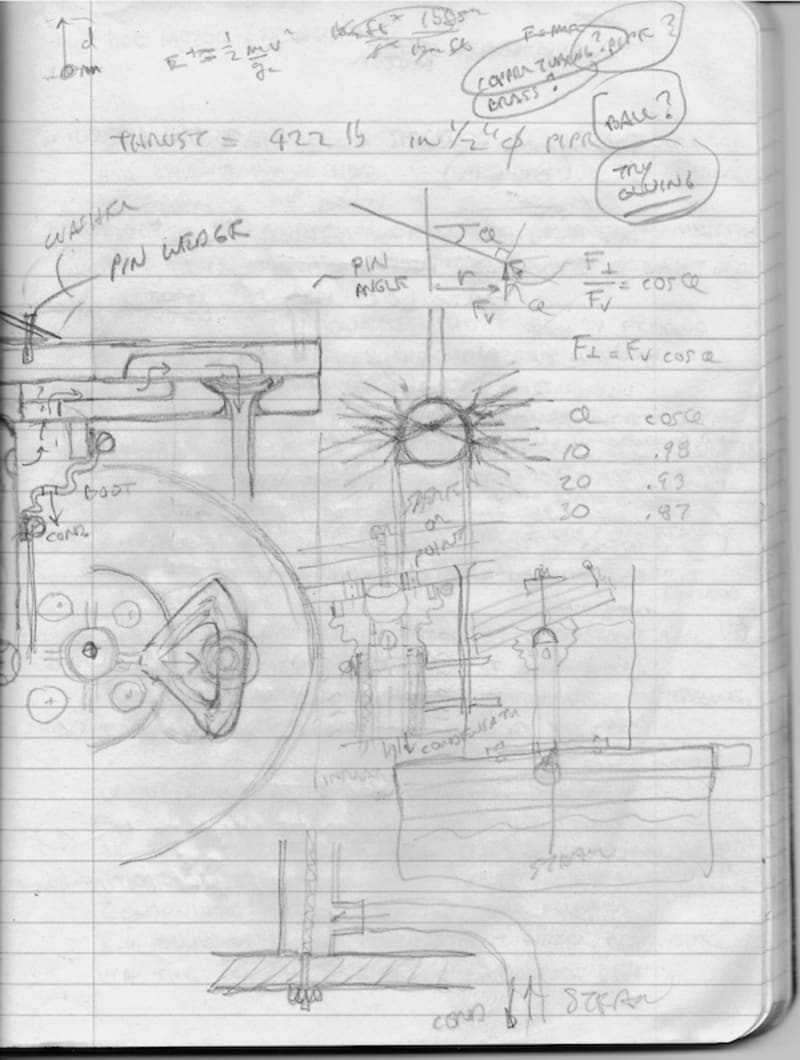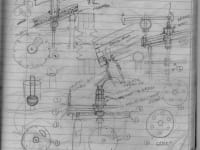THE DCCM
- Direct Contact Condensation Motor-
(Newcomen's atmospheric engine re-borne)
Direct Contact Condensation occurs when water and steam meet, causing a violent interaction.
From Pop-Pop boats to BWR Emergency Core Cooling Suppression Pools, DCC has the potential to both delight and destroy.
The proposed DCC Motor harnesses this destructive power by regulating the flow of low pressure steam into a swash plate pump that is submerged in water.
The result is high torque, low rpm motive power from coordinated hydraulic impulses delivered to the swash plate by rising pistons of water.
Rotation is initiated by hand and injection port geometry, angular injection port position and swash plate inclination determine the motor performance characteristics.
The prototype presented here generates steam in a pressure cooker and supplies it via 1/2"dia white tube to the red billiard ball distribution manifold that doubles as a swash plate bearing.
Condensate is captured by the orange sink plunger and delivered to the trash bucket water reservoir via the black sink drain column.
Steam moves radially through 8 holes in the non-rotating white HDPE swash plate and is injected into each of 8 off-white PVC hydraulic cylinders via the V shaped injection port located in the rotating white swash plate.
Rapid condensation at the steam/liquid interface in a cylinder creates a vacuum into which a slug of water rises, pushed by atmospheric pressure on the free surface.
The sudden impact of slug on swash plate transfers momentum and produces a rotational moment on the black ABS pipe output shaft.
The DCC motor has few moving parts and could provide reliable motive power in remote villages without electricity to drive water pumps, grain and rice milling devices.
Video
Like this entry?
-
About the Entrant
- Name:David Moffat
- Type of entry:individual
- Software used for this entry:none
- Patent status:none








